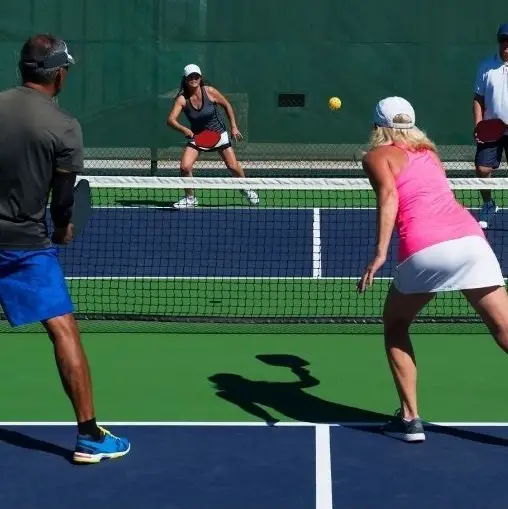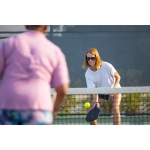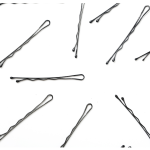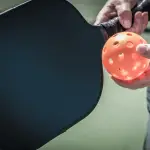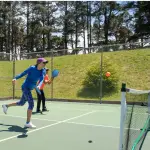Five years ago, Helle Sparre came to Pickleball after years of teaching tennis and playing in the pros during the 1970’s. She found the game of Pickleball to be well suited to her playing style since she was not a power player. Helle remembers how she took to Pickleball, “I could do all those kind of fun shots like a swinging volley, the drop shots, all the kind of trick shots that you get to do in tennis every so often. But it usually doesn’t work because you get so little practice at it. And in Pickleball, that’s kind of all you do. So, it really suited my game, which is not a power game. It’s more touch finesse and kind of a chess game out there.”
Where’s the Strategy?
When Helle started playing Pickleball she felt like there wasn’t much strategy to the game and the common strategies really were not right. This means Helle often has to unteach her students the strategies like the forehand always takes the ball down the middle and run to the kitchen line as fast as you can after serving. Helle said, “I would see people hit the ball, run to the kitchen, and get slammed because they didn’t hit a good third shot or it was an attackable ball. So those two things in the beginning I was saying, there’s something wrong with this so that I didn’t really feel there was any strategy out there other than those two main things.”
Helle stresses in her teaching that the most important thing is your position in relationship to your partner. As an example, you and your partner should never be side by side even though many people believe you should move to the net together. This makes balls hit down the middle a challenge since you and your partner are both fighting to take these shots. Instead, you and your partner should be slightly staggered with one player a step or two behind the lead player.
Helle said the best strategy is to first defend before you attack. She explains, “It’s not as important what your opponents are doing as what you and your partner are doing together. So, you don’t leave that hole or have an easy winning shot for your opponent to explore it. So, I’m always trying to find the hole or the gap in the opponent’s court while I’m defending my gap at any cost. So those are things, different things to think about, then get to the kitchen line.”
It’s Like Chess
Just as chess pieces have certain roles or moves they can make, Helle has a similar analogy for a doubles team. She calls one player the workhorse and the other the blocker. The blocker is the player directly in front of the opponent who is hitting the ball. This player stands in front of the workhorse and covers less of the court. However, the blocker has a dual role of being the one most likely to attack a ball or be attacked by their opponent.
Since the blocker is more likely to be attacked by their opponent, the blocker needs to be able to reset the point. This means they are not hitting the ball hard, but instead hitting softly with precision. Helle describes the blocker’s role, “As you become a better player, you need to keep the ball in play more than trying to kill it. Everybody can kill it. And the lower level players have that idea that they can kill any ball. And that’s where they have to learn to reset.”
On the other hand, the workhorse is the person on a diagonal line from the player hitting the ball. The workhorse should be a little bit behind the blocker and should be covering two-thirds to three-quarters of the court. So, this player covers the angle, plus lobs, and the middle if the blocker does not take it. The workhorse is the more defensive player who is steady on the court and keeping the ball in play.
Wrong Way Wanda
If the workhorse mistakenly moves in front of the blocker, Helle calls this person “Wrong Way Wanda” because this player has moved the team out of the correct position. So, your opponent can now attack the large gap that exists down the middle of the court. While you don’t want to be a Wrong Way Wanda, you should take advantage of this situation when your opponents get out of position. And like Helle said earlier, Pickleball is a chess game. To learn more about Helle’s doubles strategy, go to PickleballFire.com/doubles.
If you are interested in more instructional articles, be sure to get a free subscription to the Pickleball Fire magazine.

